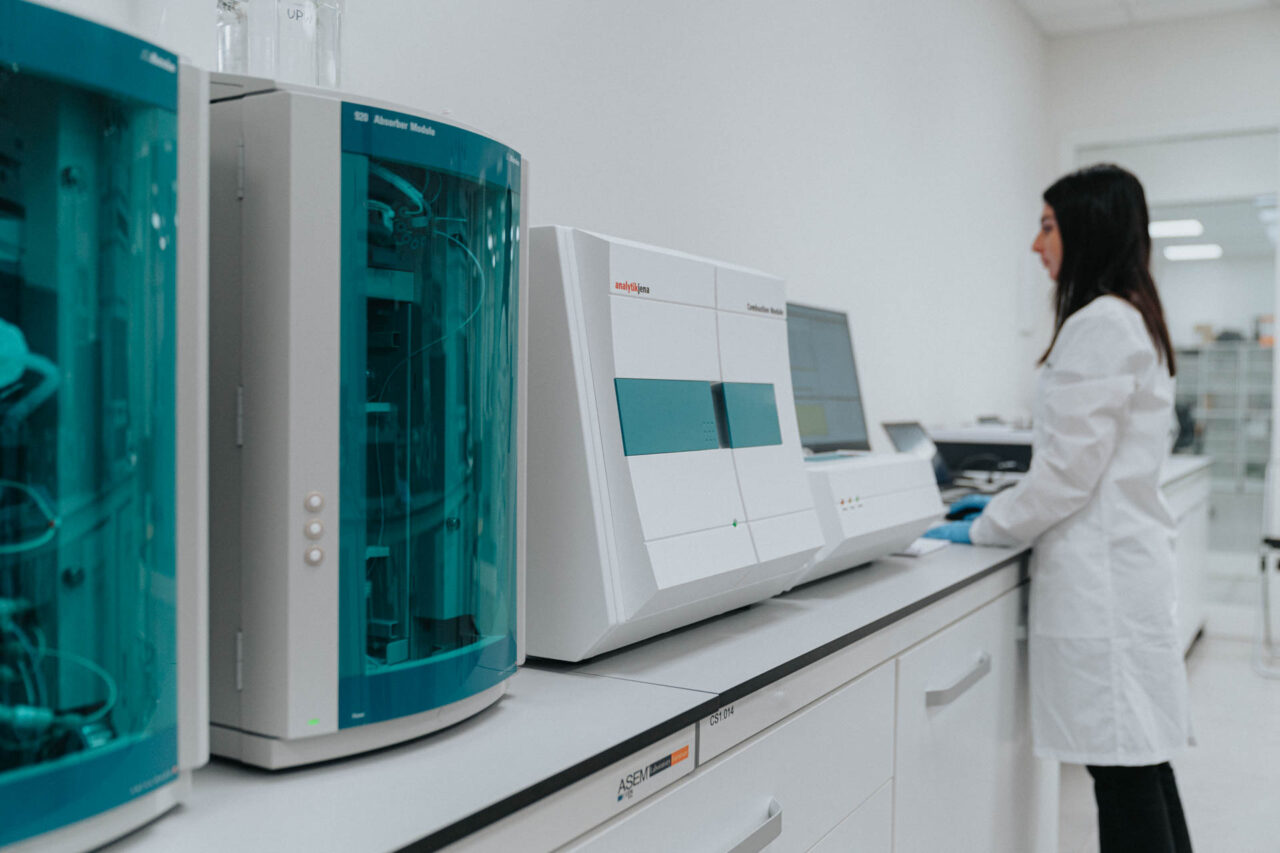PFAS – New equipment
PFAS analysis, innovative tools for the determination of total fluorine (screening test for the PFAS identification on a wide variety of matrices - textile, leather, paper, plastics)

Analysing the presence of PFAS, commonly called forever chemicals, has become a priority activity for many production sectors. PFAS are a family of about 10 thousand different chemicals that are used in different industries sectors and can have serious effects on people’s health. The TIL laboratory is equipped with all the necessary instruments both to identify individual substances (target analysis) and to perform the screening test (determination of Total Fluorine) useful to detect the general presence (untargeted analysis) of any substance attributable to PFAS.
To date, there are two methods of analysis provided internationally: target analysis and total fluorine content analysis. In TIL, both can be performed.
Targeted PFAS analysis is used to quantify individual specific PFAS. To reliably quantify a specific PFAS (e.g. for application purpose), an analytical reference standard for the specific PFAS must be available. This is linked to the commercial availability of the reference standards, which laboratories have increasingly acquired over the years. The highly specific target analysis poses an objective limit to the possibility of searching for and quantifying PFAS in materials, as only 50-60 PFAS molecules are currently available as analytical standards.
TOF (total organic fluorine content) analysis is a non-specific method that allows the identification of all the different forms of PFAS present in the materials (PFAS, TOP, polymeric PFAS). The analysis provides coverage for those substances for which there are no identifiable reference materials (PFAS targets) or verification of polymeric PFAS, which cannot be identified by traditional analysis.
The analytical approach to PFAS class restriction must be able to follow a multi-level analytical verification: PFAS target verification represents variable fractions of organic fluorine in the sample, while total content verification serves to effectively define the quantity of these substances.
The analytical technique used by TIL in this study determines the total Organic Fluorine content and is based on CIC technology – Combustion Ion Chromatography.

